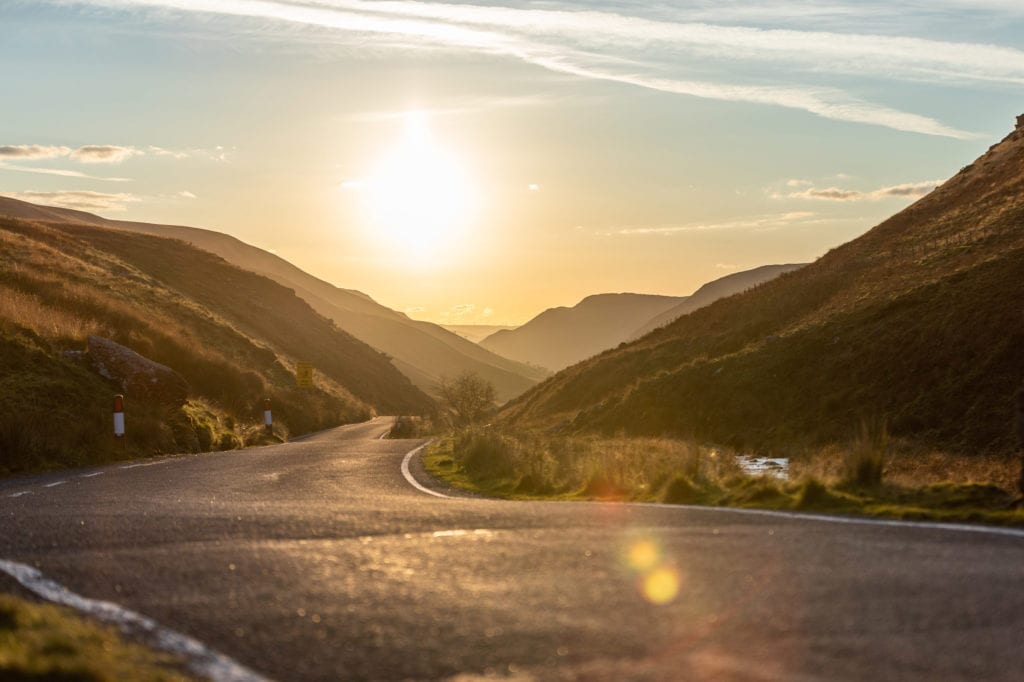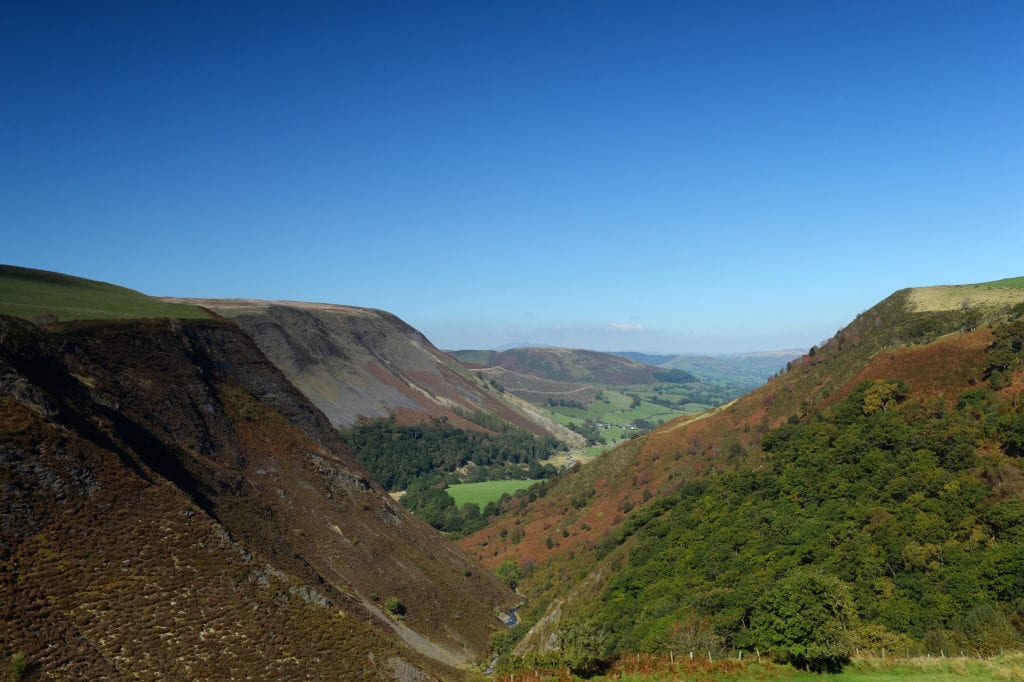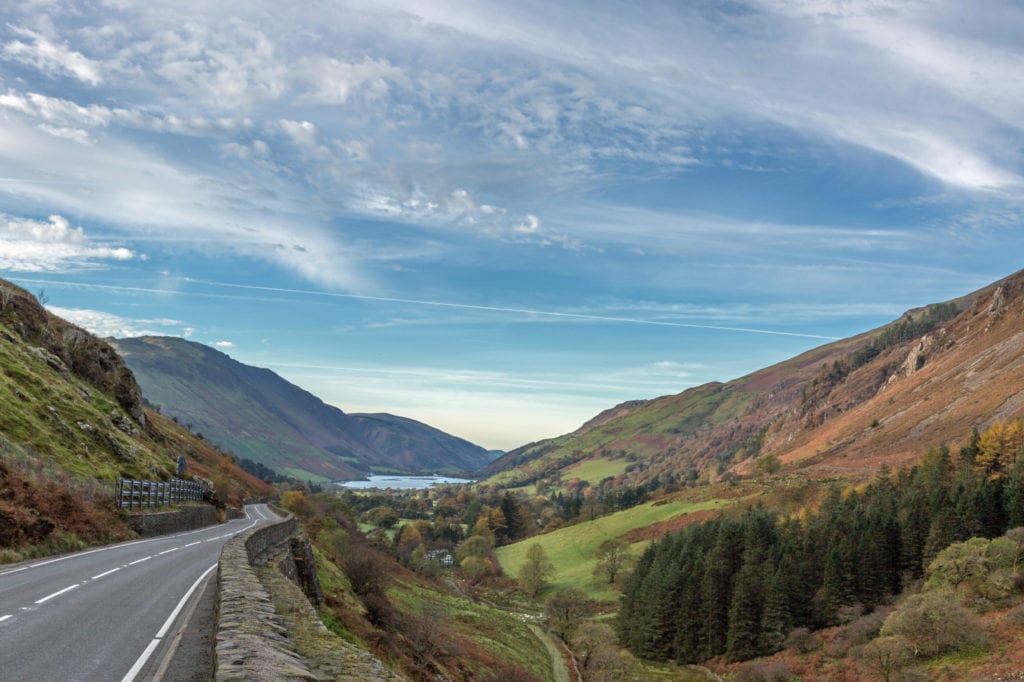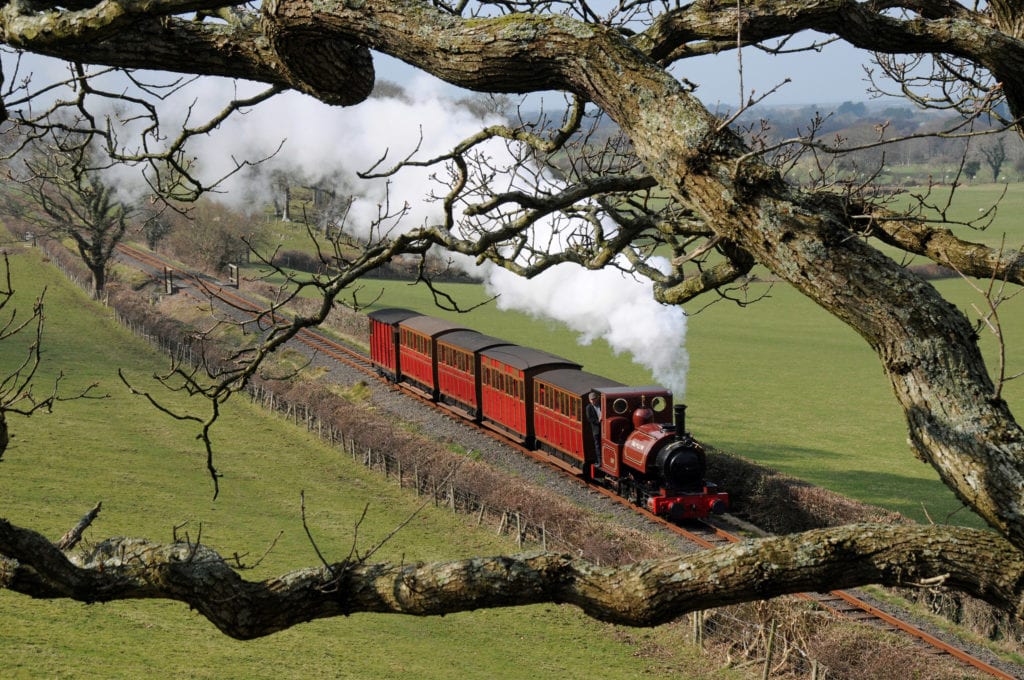With stunning scenery around every bend, Mid Wales has some of the most scenic drives in the UK where visitors can take their time and enjoy the views.
Many of the fantastic routes are set against panoramic and breathtaking backdrops. Here are a few suggestions to whet the appetite of motorists who love to explore places off the beaten track.
Our scenic drives begin with Abergwesyn Pass from Llanwrtyd Wells – famous for bog snorkelling, the man versus horse race and the Alternative Olympic Games – to Tregaron.
This single track runs through an almost brutally wild landscape of moors, escarpment, pine forest and scurrying streams. In the middle, there’s a steep series of hairpins called the Devil’s Staircase.
It’s not built for speed, which means its 20 odd miles can seem much further, especially when you might not pass a single soul for the entire trip, other than the occasional sheep.
Along the route, drivers will see Soar y Mynydd, the most remote chapel in Wales, which is well worth a short diversion. Further south, past Llyn Brianne reservoir, is the RSPB Gwenffrwd-Dinas reserve.
The mountain road from Aberystwyth to Rhayader crosses the spine of the spectacular Cambrian Mountains.

Head out of Aberystwyth on the A4120 to Devil’s Bridge, follow the B4574 to Cwmystwyth, then pick up the tremendous mountain road that soars through the mountains, past the northernmost of the Elan Valley reservoirs before eventually dropping down into Rhayader.
On the way, drivers can check out the university town of Aberystwyth, take a steam train journey up to Devil’s Bridge on the Vale of Rheidol Railway and explore the Devil’s Bridge Falls.
There are also the Elan Valley reservoirs, conceived by Victorians to supply water to the industrial English Midlands and now a tranquil paradise for walkers and wildlife. Be sure to check out the valley for stars on a clear night, as it’s a Dark Sky reserve.

© Crown copyright (2021) Cymru Wales
Other scenic routes to explore include the mountain road from Llanidloes to Machynlleth, via Clywedog Reservoir. The views are wonderful and take in the former lead mining community of Dylife and the Dylife Gorge and Wynford Vaughan-Thomas viewing points which afford panoramic views over the surrounding area.
The breathtaking routes continue with the Bwlch y Groes Pass, a route that lies on minor roads linking Dinas Mawddwy, Llanuwchllyn and Lake Vyrnwy, with views across the Dyfi Valley and Cadair Idris.
This is part of the pilgrim’s route from North West Wales to St David’s in South Wales. A cross, which can be found just below the summit at the junction of the roads from Vyrnwy and from Dinas Mawddwy, was placed on the route as a symbol of faith and strength comforting travellers since medieval times.
Bwlch y Groes was used between and after the wars by the Austin Motor Company and the Standard Triumph Motor Company to test prototype cars and their performance during hillclimbing.

Another must is the route that takes drivers along A487 from Machynlleth via Corris towards Dolgellau and before turning off on the B4405 to Tywyn via the picturesque Talyllyn lake at the foot of Cadair Idris mountain.
In the seaside resort of Tywyn, you can swap your car, motorhome, motorbike or bicycle for a different form of transport – Talyllyn Railway, the world’s first preserved railway.

Photo by David Mitchell.
For those drivers who enjoy sea views, try out the coastal route from Portmeirion in the north to Cardigan in the south west of Mid Wales.
Portmeirion is a magical place, an exquisite Italianate village designed by Clough Williams-Ellis tucked neatly into a headland overlooking the River Dwyryd. The village was the surreal location for cult 1960s TV series The Prisoner and it’s a hugely popular day-trip.
On the journey south along the A496, check out Harlech Castle, a World Heritage Site, which was built in the late 1200s and now looks slightly marooned on its rocky plinth. A new bridge has made access easy and connected the castle with a new visitor centre that has five luxury apartments for hire.
The famous song ‘Men of Harlech’ commemorates an epic siege in the 1460s, when the castle held out for seven years, the longest siege in British history.
Barmouth was a hard-working, ship-building, slate-exporting port until 19th century tourists took a shine to its mountains-meet-sea charms. Nowadays it’s Southern Snowdonia’s most popular resort, with big beaches and splendid views up the Mawddach Estuary.
Take the toll bridge across the estuary at Penmaenpool to join up with the A493 coastal route and be sure to also check out Aberdyfi, a small seaside village in southern Snowdonia. where the River Dyfi meets the green-blue waters of Cardigan Bay.
Aberdyfi is the subject of a popular Welsh folk song, ‘Clychau Aberdyfi’ or ‘The Bells of Aberdyfi’, which refers to the legend of Cantre’r Gwaelod, a submerged kingdom beneath Cardigan Bay.
Drive inland to the ancient capital of Wales at Machynlleth to crossing the River Dyfi before continuing on the A487 to Aberystwyth, a pier-and-prom Georgian/Victorian resort, is well worth a visit.
There’s lots to see and do in the town, including the Aberystwyth Cliff Railway up Constitution Hill, the priceless treasures of the National Library of Wales and the Ceredigion Museum.

Next stop driving south is the busy little town of Aberaeron, which has a fine set of colourful Regency buildings along its harbour.
This stretch of the Welsh coastline is incredibly rich in wildlife, with Britain’s biggest pod of dolphins spending the summer in Cardigan Bay, centred around New Quay, once an important fishing and shipbuilding town that is now a popular holiday resort.
Our journey ends in Cardigan, an old fishing port with impeccable Welsh roots. In 1176, the first eisteddfod was held in Cardigan Castle and there’s still a traditional Welsh feel to the town.
